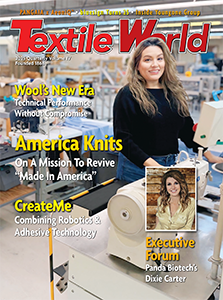WASHINGTON — January 30, 2018 — MetTel, a leading communications solutions provider, today announced that it has doubled its Federal team and tripled its Washington office space in the fourth quarter of 2017 to meet the rising demands of US Government IT digital transformation. Former executives and advisors of Verizon and NATO lead the new wave of talent.
“2018 is projected by leading analysts as a tipping point for digital transformation with up to $13 trillion in IT spending across businesses and government,” said Marshall Aronow, CEO of MetTel. “Running our government more efficiently, effectively and securely through upgrades spurred by the GSA’s Enterprise Infrastructure Solutions program and the Modernizing Government Technology Act will help restore US competitiveness.”
MetTel has added a range of new positions in security, sales, management and engineering, including key executives in charge of information security and sales management. Dr. Curtis Levinson will serve as Chief Information Security Officer (CISO) for MetTel as well as its Federal team. Levinson of Washington, DC, will oversee all IT security for MetTel and the EIS solutions it provides to Federal agencies. He has worked as a strategic consultant providing cyber security guidance to a range of clients for more than 30 years. Levinson continues to serve as US Cyber Defense Advisor to the North Atlantic Treaty Organization (NATO).
Harry Squire joined the company as vice president of Sales for MetTel Federal and will run all sales management operations for the MetTel Federal team. Squire, of Alexandria, Va., previously served as area vice president for the Verizon-Public Sector team for nine years, successfully aligning Verizon services to customer needs while managing effective sales teams.
Diana Gowen, executive vice president, general manager of MetTel Federal added: “We are building on MetTel’s base of expertise to match the needs of government customers. Federal agencies increasingly require digital infrastructure that can withstand the shifting priorities of administrations and flex rapidly to provide new or improved services to constituents regardless of budgetary considerations.”
MetTel grew overall by 20 percent in 2017 and saw increases in sales within its key growth initiatives including enterprise mobility, Internet of Things (IoT), cloud connectivity services, software-defined wide area networks (SD-WAN) as well as core network integration services. Its most successful year to date, 2017 saw MetTel win a position in the $50 billion Enterprise Infrastructure Solutions (EIS) contract, managed by the U.S. General Services Administration (GSA).
With a successful track record of assisting Federal agencies such as the US Department of Agriculture and US Department of Energy to meet their communications objectives, MetTel is currently working with several government organizations under the EIS contract. These include a wide variety of communications and networking solutions designed to help government centralize communications, reduce costs and digitally transform operations for greater adaptability to funding and market changes.
Distinguished by its unique ability to aggregate and integrate major carrier networks and pool network resources, MetTel gives organizations the broadest and best quality of coverage available. The company is extending its portfolio of advanced managed services and solutions including IoT, SD-WAN, cloud computing, enterprise mobility, data analytics, procurement and telecommunications management as it expands globally.
MetTel provides services to some of the largest brands in industries such as airlines, apparel, energy, financial services, healthcare, consumer electronics/mobile devices, food & beverage, retail and others. These customers benefit from MetTel’s network convergence, advanced solutions, and award-winning customer service.
Posted January 30, 2018
Source: MetTel




